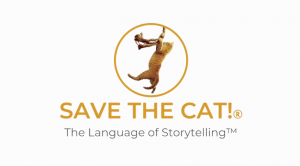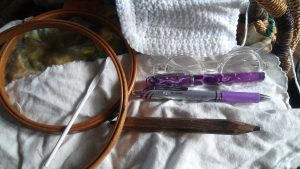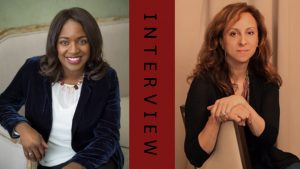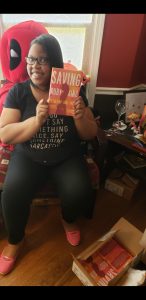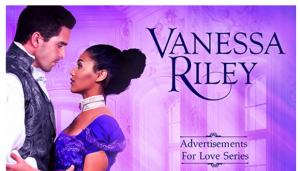Interviews
It’s our pleasure to introduce you to author Julia Daily today! Julia recently won a “Take 10” interview with WU during an auction to benefit the women’s fiction association, WFWA. We’re so glad that she did. Hers is a story of perseverance, as she is indeed a debut novelist over the age of 60, who worked for years on her work-in-progress, No Names to Be Given. Once you come to understand the root of her story, you might even say she had been working on it all of her life. And our interview was chock full of so much great info, and Julia was so generous for sharing it, that we made this a “Take 11.”
More about Julia from her bio:
Julia Brewer Daily is a Texan with a southern accent. She holds a B.S. in English and a M.S. degree in Education from the University of Southern Mississippi. She has been a Communications Adjunct Professor at Belhaven University, Jackson, Mississippi, and Public Relations Director of the Mississippi Department of Education and Millsaps College, a liberal arts college in Jackson, MS. She was the founding director of the Greater Belhaven Market, a producers’ only market in a historic neighborhood in Jackson, and even shadowed Martha Stewart. As the Executive Director of the Craftsmen’s Guild of Mississippi (300 artisans from 19 states) which operates the Mississippi Craft Center, she wrote their stories to introduce them to the public.
Daily is an adopted child from a maternity home hospital in New Orleans. She searched and found her birth mother and through a DNA test, her birth father’s family, as well. A lifelong southerner, she now resides on a ranch in Fredericksburg, Texas, with her husband, Emmerson, and their Labrador retrievers, Memphis Belle and Texas Star.
That second graph holds the key to Julia’s novel and her personal connection to it. She is adopted, and her novel revolves around the topic of adoption. That’s why we decided to publish this interview in November, which happens to be National Adoption Awareness Month.
We hope you enjoy this interview with Julia and that you grab her book, too. If you’re a fan of audiobooks, check out her deal with Chirp, where you can pick up her audiobook for $2.99 now through 11/16.
Learn more about Julia on her website, and by following her on Twitter, Facebook, Instagram, and Goodreads.
WU: Tell us about your debut novel in a few sentences. What is your “elevator pitch”?
JD: When three young unwed women meet at a maternity home hospital in New Orleans in 1966, they are expected to relinquish their babies and return home as if nothing transpired. Twenty-five years later, they are brought back together by blackmail and their secrets threatened with exposure—all the way to the White House.
WU: High concept! When did you first conceive of this story? How did it come to you–character or plot first?
JD: There is a touch of my own memoir running through the story, so the premise came to me over the years. I knew I wanted to begin at […]
Read MoreWhen she was in her twenties, Amy Neswald—whose debut story collection I Know You Love Me Too (October 2021) won the New American Fiction Prize—intentionally squelched her strong urge to write so she could try her luck at acting. Following her first gig building sets and building props with The San Francisco Mime Troupe, her creative journey took her from beauty school to Broadway, where she worked as wig master including for the legendary show Jersey Boys, and from screenplay writing to filmmaking. But destiny kept nudging her gently back to writing. In the early aughts she won NYC Midnight’s Short Story Challenge – and with it, a scholarship to a two-year screenwriting program. In her mid-forties, she left Broadway to pursue an MFA in Creative Writing at the University of New Hampshire and then went on to teach creative writing at the University of Maine in Farmington. Her screenplay The Placeholder was awarded a Best Screenplay award at the Rhode Island Film Festival in 2008.
Fascinated by the breadth of Amy’s creative accomplishments and the way she seems to magnetically attract awards and accolades, I asked her to join me for an interview here on WU.
SB: Tell us about I Know You Love Me Too, and how it came to win the New American Fiction Prize
AN: I started working on the collection in graduate school at the University of New Hampshire. When I wrote the first story, I had no idea I’d stick with the two sisters who are its main characters, but my professor, mentor, and friend Tom Paine introduced me to Olive Kittredge by Elizabeth Strout. It was a game changer for me. I didn’t know a short story collection could tell a complete story over time about a single character and I loved it. So I wrote another story, which is no longer in the collection, where one of the main characters simply passes through, but at a pivotal time in her life. And then I was hooked. I fell in love with both sisters and everyone who surrounded them.
Winning the New American Fiction prize was completely unexpected. When I felt like I had a collection, I sent it to all the big contests and, as expected, I was rejected by all of them. My collection is not edgy; it doesn’t hit on trending issues and the questions it asks are very subtle and small, so I really didn’t expect any attention. But… you’ve got to put your work out there. I don’t know the real ‘why’ or how David Bowen and Judith Blair Mitchell chose my collection out of a pile of other quality works, but I’m so thankful that they did. I’m gobsmacked by the opportunity to have the New American Press publish my work.
SB: You’ve won several prestigious awards: The Rhode Island Film Festival’s Best Screenplay, NYC Midnight’s Short Story Challenge… It seems that each award was for one of your “firsts:” […]
Read MoreWhile I don’t recall how exactly I learned about Save the Cat!–a book marketed primarily to screenwriters–I’ll never forget reading it for the first time, that sense of “Oh, yes; this author has tapped into something new and fundamentally true about story.” That author, Blake Snyder, agreed to an interview with me for Writer Unboxed in 2008, and while you can read the whole thing here today, what you might not come away with are things that stand out in my memory about that conversation. First, it was a conversation, and so I was able to hear Blake’s tone of voice, his kind and easy manner, his laughter. I didn’t include all of the times he thanked me for an insight or question, but he was genuinely grateful to be heard and humbled that his ideas were being explored seriously. He was also so generous with his time–time that was, unbeknownst to anyone, running short. When he passed away suddenly the following year at the age of 52, the wider writing community lost a guru and friend.
Fast forward to today: Blake’s Save the Cat! is known all over the world, referenced with the ease of a blue sky by writers everywhere, and is taught at the best film schools in the country. (My son just completed film school at USC, and so I promise you it’s true!) Blake’s books and concepts live on, and in fact his franchise has thrived and grown and even been thoughtfully adapted for novelists via a book written by Jessica Brody (Save the Cat! Writes a Novel). I’m cheered to know that Blake’s ideas have become a meaningful legacy for writers of all stripes, and are behind countless completed, purchased, and successful stories–films and novels alike.
Later, I’ll review an extension of Blake’s legacy: an online course and a set of cards meant to help storytellers craft a narrative from first beat to last. [Click HERE for that review.] Until then, I hope you’ll enjoy my vintage interview with the late, great Blake Snyder.
Interview with Blake Snyder
TW: In the first Save the Cat, you introduce the idea that every story falls into one of ten new genre categories–Monster in the House, Golden Fleece, Out of the Bottle, Dude with a Problem, Rites of Passage, Buddy Love, Whydunit, Fool Triumphant, Institutionalized or Superhero. How does your latest book, Save the Cat Goes to the Movies, expand on this concept? And in what other ways are the books different?
BS: In the first Save the Cat, I proposed that most well-structured stories fall into certain patterns. I pointed out fifteen points on the Blake Snyder beat sheet that I think are unique.
What I’m trying to get across is that there’s a function for every section of a story. As a writer myself, I’ve spent a lot of time trying to figure it all out. I’ve been lucky in that I’ve had a lot of success in selling scripts, and so breaking down the components of what makes any story work has always been my goal. That was the important thing in the first book.
The other important thing in the first book was the concept that there are ten story types. […]
Read MoreThe artist’s tools: From Deb Lacativa’s studio, where all the magic happens.
My first Author Up Close post for 2021 features someone many of you might already be familiar with. Deb Lacativa is not only an active member of the Writer Unboxed community, she was also the 2016 WU Conference Scholarship recipient and returned to deliver the 2018 keynote speech. Deb also reminded me that she was, in her own words, “the first sacrificial lamb to the ‘All the King’s Slaughter … I mean, All the King’s Editors’ feature on Writer Unboxed.” The story Deb submitted for that series is now complete and will be published in a few weeks.
I not only wanted to interview Deb because she’s a gifted storyteller and creator (and friend), but because from the start, Deb defined success on her own terms. When she realized her genre-bending, 800-page debut novel would likely never get buy-in from a traditional publisher, she decided to take a different route to publication. In this Q&A we learn more about the novel and the choices that led Deb on that journey. Of course, if you know Deb at all, you know her answers are filled with the same mix of magic and mayhem her stories are. And, as an added bonus, at the end of this post, there’s a special treat.
GW: Tell us a little about how your writing journey started and when you went from dreaming about becoming an author to taking actionable steps to becoming one?
DL: I’ve been writing since I figured out that crayons didn’t taste good and had a better purpose. I was surrounded by adults who frequently had their noses buried in newspapers. The headlines seemed designed for a toddler to puzzle out, so I pestered for answers because I wanted in on this grownup magic. “MOBSTER SLAIN” above a lurid black-and-white photo on the front page of the NY POST was the first sentence I ever copied. But, beyond bs-ing all my teachers with style over substance at every opportunity, it wasn’t until 2005 that I started writing for an audience on my blog: The misadventures of a textile artist. I used it to be engaging. Sometimes, downright hilarious.
Then, over the course of sixteen months starting in the summer of 2012, both my parents and my husband, Jim, passed away. By January 2014, I needed to get out of the house and be with people who did not know me. It could have been throwing pots or axes, it didn’t matter just as long as there were no condolences. Meetup offered a writer’s group not far away. “Bring a sample of your writing.” I took my turn and was immediately hooked on getting feedback, good or bad. I’d found my heart and purpose for writing. I never dreamed of becoming a published author. It became an objective. Like learning to read and write, it was a skill set that I wanted to learn.
Read MoreAfter sailing for the USA in the 2004 Olympics, Carol Newman Cronin shifted gears and became a writer, penning four novels (and counting…) with themes tied closely to the sea and coastal life. Her latest, Ferry to Cooperation Island, releases on June 16.
Like most authors this year, Carol had no idea what the whims of Mother Nature had in store as she looked ahead to her launch date. The date had been carefully planned to fall right before the now-postponed 2020 Olympics. Carol had a series of launch readings in appropriately coastal settings scheduled for the summer. And then…
But as a sailor, Carol knows a thing or two about adjusting to Mother Nature’s whims. She’s inspired on both water and land by the motto, “When you can’t change the direction of the wind, adjust your sails.” Her wisdom has far-reaching implications for all of us, whether we’re currently launching books or in the trenches with a WIP.
I’m happy to share this inspiring interview with Carol.
Q: How did you react when you realized that Coronavirus was going to profoundly change your plans to launch Ferry to Cooperation Island?
CNC: At first, there was denial: surely it will all be over by June! Once reality set in that this was going to change, well, EVERYTHING, I started to research how other authors were handling online book launches. Then I freaked out, because the possibilities are so limitless right now—and there are so many authors launching their own books into the same “space.” Fortunately, one author-friend reminded me to focus on what was really important to me and to FERRY, and let go of the rest. That was a reminder that this book isn’t going to change the world—though I like to think it will make a small dent in our global negativity.
A few weeks ago, I finally shifted all my launch-party energy from “maybe we’ll be able to meet in person” to “we’re going virtual.” The date remains the same, June 18, and you’re all invited!
Q: So far, what has changed for you? What hasn’t?
CNC: First of all, all the regattas I planned to sail have been pushed back until 2021 (just like the Olympics), so my schedule’s wide open for book signings! As far as the launch party, I was really looking forward to physically associating FERRY with my own town’s actual ferry service, which runs from Jamestown to Newport in the summer and was part of the book’s inspiration. That will have to wait until it starts running again.
The best change of all is that more people are finding or making time to read again. I chat more with neighbors walking by, and a surprising number are actually interested in reading my latest piece of #coastalfiction!
What hasn’t changed is the incredible support I’ve received all along this journey from other writers, many of whom I met at the UnConference last November.
Q: Aside from major disasters like Coronavirus, what other writing-life “storms” have you sailed through?
CNC: My early fiction writing could be compared to a series of […]
Read MoreAuthor Catherine Adel West Unboxes her Novel, Saving Ruby King
In this installment of my Author Up Close series, I share a Q&A with debut author Catherine Adel West. Catherine and I are social media friends, and I’ve been impressed with the way she has navigated becoming a debut author during this unprecedented time. Her novel, Saving Ruby King, which Kirkus calls “a multilayered love letter to South Side Chicago’s African American faith-based community,” tackles the complex topics of faith and family and the secrets that can bind or break them.
Saving Ruby King debuts on June 16, and even in the midst of a busy launch, Catherine took the time to offer great advice to writers about making their query letters stand out, researching genres, and publishing during a pandemic.
GW: One of my favorite parts of this series is hearing author origin stories: the stories behind what propelled them from people who only thought about writing, to people who actually wrote and either queried or published a novel. What’s your author origin story?
CAW: It took me five years from beginning to end to write the rough draft of Saving Ruby King. It was the first book I ever wrote. Originally, it was a short story idea, and at a wedding I was speaking to an old college classmate, and she suggested I write a book. I had NO experience, but I had two degrees in journalism and figured how hard is it to write a book? Turns out it’s incredibly hard to write a book. Go figure!
Saving Ruby King started out as a hobby, became a passion, and soon turned into an obsession. Once I finished what I thought was the final draft (turns out I had at least 10 more versions to go), I began querying. At first, I didn’t know what I was doing, but luckily I had fantastic friends in my corner who are also writers. They helped me further hone my story and develop my query letter. One friend, Kevin Savoie, was instrumental in helping me navigate the querying process. I had many close calls with agents, including an R&R, and was feeling discouraged when I decided to again participate in #DVPit—a contest for POC/marginalized writers—in April 2018. After an offer of publication from an indie press, I notified the other agents with whom I had full manuscript requests, and Beth Marshea of Ladderbird Literary offered me rep, and I happily accepted Beth’s offer. It took me nine months to land a literary agent.
I went with Beth as she had such a passion for my story, and I knew I could always trust her to have my best interests at heart. After a round of edits, we went on submission and my book was acquired by Park Row/HarperCollins within six weeks!
From writing to publication, I’ve had astounding highs and lows, but I’m so grateful for where the journey has led me thus far.
Read MoreMichael Zapata’s ambitious debut novel, The Lost Book of Adana Moreau (Hanover Square Press/HarperCollins) meanders back and forth in time, across continents, languages, and dimensions, as one of the main characters, Saul Drower, searches for the owner of a mysterious novel manuscript that his recently deceased grandfather had promised to deliver. Clues to the mystery reveal themselves via stories within stories, a vague introduction to theoretical physics, meditations on the climate crisis, and delicious references to science fiction classics. As all the stories within stories knit themselves together, Saul tracks Maxwell Moreau, the son of the manuscript’s author, to post-Katrina New Orleans where they confront the meaning of their journeys and their connections to those who came before them.
Mike is a founding editor of MAKE Literary Magazine and the recipient of an Illinois Arts Council Award for Fiction, the City of Chicago DCASE Individual Artist Program award and a Pushcart nomination. As an educator, he taught literature and writing in high schools servicing dropout students. He is a graduate of the University of Iowa and has lived in New Orleans, Italy, and Ecuador. He currently lives in Chicago with his family. His book has already been praised in The Chicago Tribune, The New York Times, The Washington Post, Kirkus Reviews, and other publications.
I was lucky enough to talk to Mike the morning his book launched. He was generous with his insights and his time, which was a real gift because I had a lot of questions about this enchanting novel.
Julie Carrick Dalton: Mike, welcome to The Writer Unboxed. As you know, I’m a huge fan of your book, in part because you take such big risks with structure. You incorporate many complex elements, yet, somehow weave them together beautifully into an un-put-downable story. What inspired you to take on such an ambitious structure in a first novel?
Michael Zapata: The structure definitely emerged sentence by sentence. That said, I have spent a lot of time thinking about the Latin American literary tradition. The structures found in Latin American literature can be so extraordinary, and I think they allow for some of these divergent elements of stories within stories. There’s a long tradition of that. I put a challenge to myself to combine that with the North American structure that is more plot-heavy, concerned with getting from point A to point B. Overall, I wanted to combine a Latin American structure with a North American structure and see what would happen.
JCD: It occurs to me that a reader could tease The Lost Book of Adana Moreau apart, restructure it, and present it as a book of fables. The story of the Dominicana and the pirate, the story of the pony and the mine, the story of the Lost City, and so many others embedded within your larger narrative. I’m in awe of how you pulled this off. Did you take inspiration from other authors who employ stories within stories?
Read MoreI’m known for asking a lot of questions. A lot of questions. Particularly of my author friends. And when I launched the Author Up Close series in 2019, my goal was to share some of their knowledge and wisdom with other writers. The series resonated with so many, I’ve decided to continue it in 2020. The information these authors share provides a unique inside look at the industry, what it often takes to break in, and helpful advice on how to handle the business on your own terms. Today’s Q&A with Regency and Historical Romance writer Vanessa Riley tackles all of that, and I’m delighted I had the opportunity to interview her.
I’ve been Facebook friends with Vanessa for years, but we only met in person when I moderated a panel discussion at the 2018 Decatur Book Festival. The panel, entitled Empowering Women with Romance: The Literature of Hope and Resistance, offered a modern, liberating take on the romance genre. One of the highlights was Vanessa sharing about the opposition she faced from some in the publishing industry regarding the viability of diverse regency stories. In my Q&A with her, she discusses how wrong these gatekeepers were, her sink or swim moment, and her recent print deal with William Morrow.
GW: You’ve got quite an interesting path-to-publishing story, particularly surrounding your serialized Christian regency saga, The Bargain. Will you share a little about what inspired you to write and publish that series yourself?
VR: My path is a little different. I’ve always been drawn to telling Regency Era stories. Faith is very important to me, so all my novels have those threads. I had been traditionally published in 2013 and acquired an agent, but no one thought there was an audience for diverse Regency stories. One look at the 10,000 to 20,000 free blacks living in London or any of England’s colonies, and you’ll see that the period is very diverse, but no traditional publisher wanted these, and I could no longer ignore the voices of those who looked like me, who lived and loved and found ways to survive.
I was at a crossroads. No publisher was going to take the risk to find this audience and prove me right. I had to do it. That was the genesis of The Bargain, a serialized tale featuring a proud African American maid who ends up sailing with her employer to the South African colony of Port Elizabeth. This was my sink or swim moment. I indie-published this novella and was surprised by the marketplace reaction. It sold over 1,000 copies in two weeks, with no advertisement or marketing other than a few posts on Twitter or Facebook. I’d proven there was a market for diverse Regencies. I also made folks hungry for more of this story. They wanted to know what happened to my characters Precious and Gareth. I had to hunker down and write. It was released in four serials because that was as fast as I could write.
Read More




